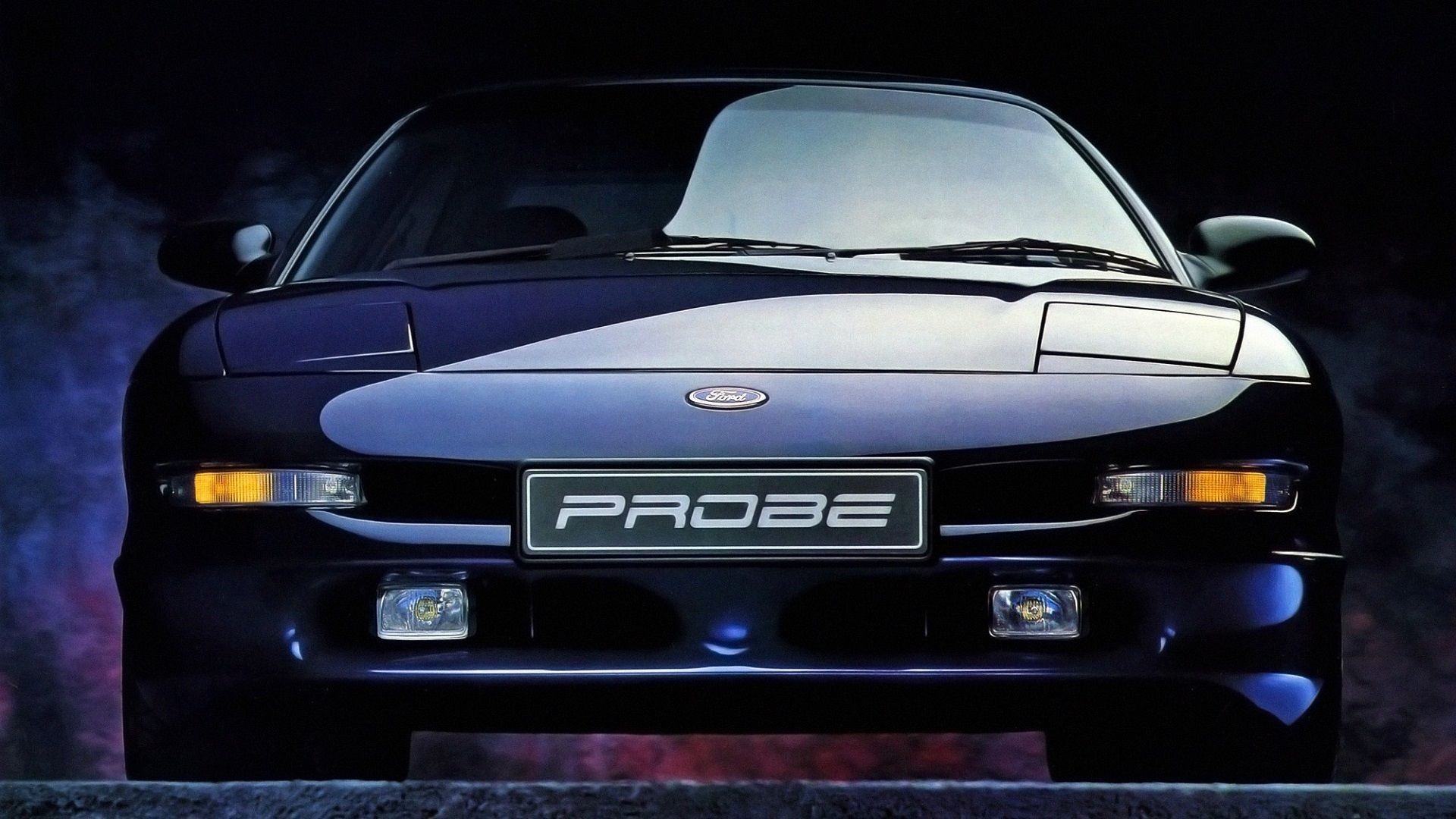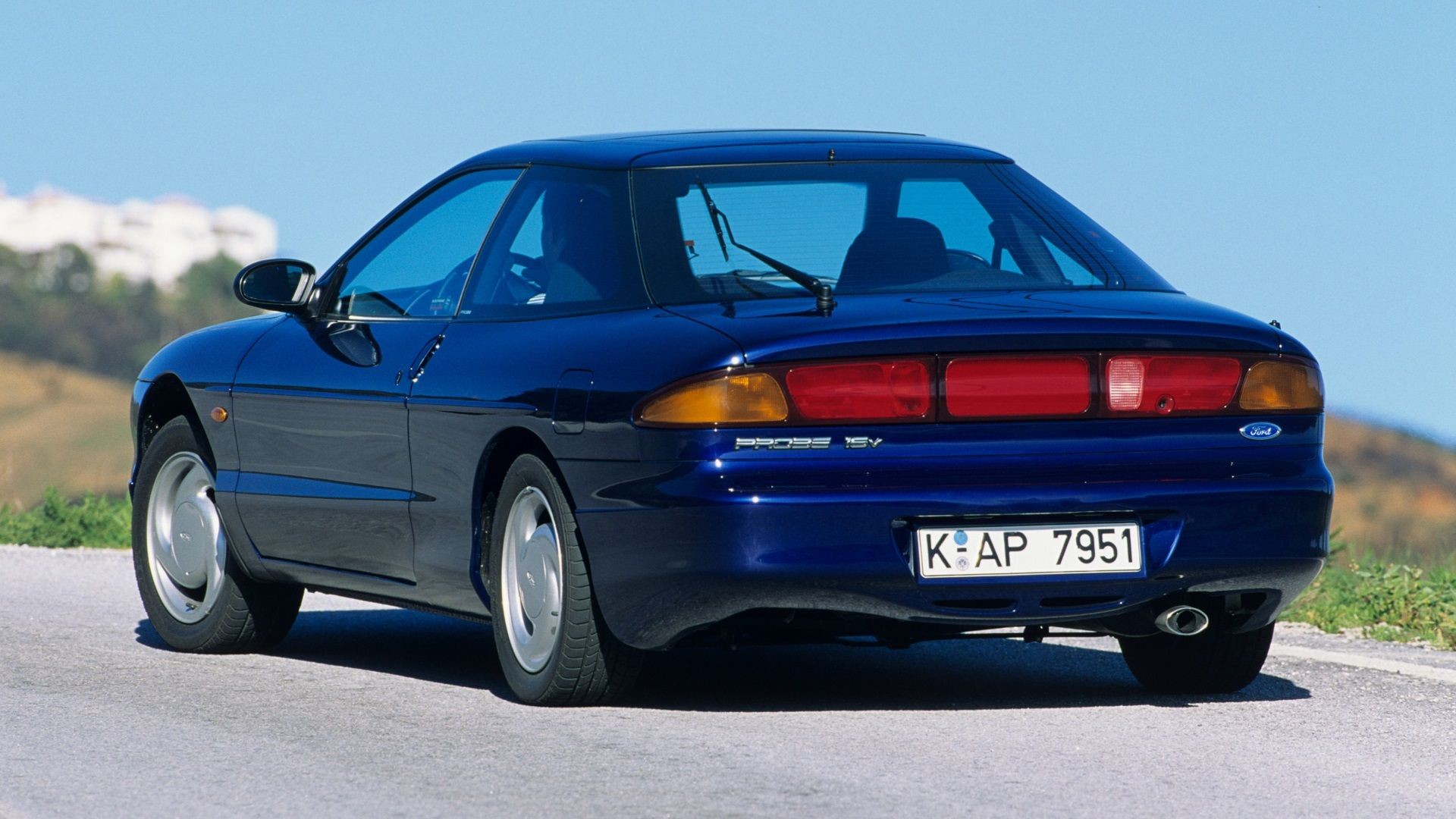Sports Car enthusiasts, get ready to dive into a world of exhilarating rides and sleek designs. This article explores the fascinating realm of sports cars, where automotive excellence meets driving passion, brought to you by CARS.EDU.VN. Discover how these iconic vehicles deliver unmatched performance, head-turning style, and a driving experience unlike any other, including key aspects like sporty handling and engine performance. Let’s explore the world of performance vehicles, high-performance cars, and sports coupes.
1. Defining the Sports Car: More Than Just Speed
The sports car. The very name conjures images of sleek machines hurtling down winding roads, engines roaring, and drivers grinning from ear to ear. But what exactly is a sports car? It’s more than just a car that goes fast. It’s a carefully crafted blend of performance, handling, design, and driving experience, all working in harmony to deliver an engaging and thrilling ride.
1.1 Performance and Power
At the heart of every sports car lies a powerful engine. These engines, often featuring advanced technologies like turbocharging, direct injection, and variable valve timing, are designed to deliver exhilarating acceleration and responsive power throughout the rev range. Horsepower and torque figures are key metrics, but it’s how that power is delivered that truly defines the sports car experience.
1.2 Agile Handling and Precise Steering
A sports car isn’t just about straight-line speed. It’s about how it handles in the corners. A well-tuned suspension, responsive steering, and a balanced chassis are essential for providing the driver with confidence and control. Sports cars often feature advanced suspension systems, such as independent rear suspension and adaptive dampers, to optimize handling and ride quality.
1.3 Striking Design and Aerodynamics
Sports cars are designed to turn heads. Their sleek lines, aggressive stances, and aerodynamic profiles not only enhance their visual appeal but also contribute to their performance. From low-slung coupes to open-top roadsters, sports cars come in a variety of shapes and sizes, each with its own unique design language.
1.4 The Thrill of the Drive
Ultimately, what defines a sports car is the way it makes you feel. It’s the connection between driver and machine, the responsiveness of the controls, the sound of the engine, and the sheer joy of driving. Sports cars are designed to be engaging and rewarding, providing an immersive driving experience that few other vehicles can match.
2. The Golden Age of Affordable Sports Cars: A Look Back at the 80s and 90s
The 1980s and 1990s represent a particularly exciting era for sports car enthusiasts. During this period, automakers produced a plethora of affordable, stylish coupes that delivered a taste of high performance without requiring consumers to break the bank. Brands like Ford, Mazda, and Toyota created models that captivated a younger generation of drivers, blending eye-catching aesthetics with sporty handling and capable engines.
2.1 The Rise of Japanese Sports Cars
Japanese automakers revolutionized the sports car landscape during this time, pushing the boundaries of engineering with turbocharged engines, lightweight chassis, and innovative technologies. Models like the Mazda RX-7, Toyota MR2, and Nissan 300ZX offered exceptional performance and handling at competitive prices.
2.2 American Muscle Meets Modern Technology
American manufacturers also stepped up their game, blending classic muscle car DNA with modern technology and improved handling. The Ford Mustang, Chevrolet Camaro, and Pontiac Firebird continued to be popular choices, offering V8 power and aggressive styling.
2.3 A Diverse Range of Options
Buyers in the 80s and 90s were spoiled for choice when it came to affordable sports cars. From nimble four-cylinder models to powerful V6 and V8 machines, there was a sports car to suit every taste and budget. This diverse range of options helped to fuel the popularity of sports cars and create a lasting legacy.
3. The Ford Probe: From Skepticism to Cult Classic
The Ford Probe is a prime example of a sports car that faced initial skepticism but has since gained a cult following. Originally intended to replace the iconic Mustang, the Probe’s front-wheel-drive layout and Japanese-engineered design were met with resistance from traditionalists. Despite its aerodynamic styling and respectable performance, the Probe struggled to gain acceptance in its early years.
3.1 Overcoming the “Almost-Mustang” Label
The Probe’s biggest challenge was overcoming its association as the “almost-Mustang.” Many potential buyers couldn’t get past the fact that it wasn’t a rear-wheel-drive, V8-powered muscle car. This perception overshadowed the Probe’s merits and prevented it from reaching its full potential.
3.2 A Resurgence in Appreciation
However, as time has passed, enthusiasts have begun to recognize the Probe’s unique qualities. Its sleek design, comfortable interior, and surprisingly capable handling have earned it a loyal following. Values of well-preserved Probes have been steadily increasing, indicating a resurgence in appreciation for this once-overlooked sports car.
3.3 Ford Probe Generational Specs
| Specification | First-gen Ford Probe (1989-1992) | Second-gen Ford Probe (1993-1997) |
|---|---|---|
| Production years | 1989-1992 | 1993-1997 |
| Platform | Mazda GD | Mazda GE |
| Engine options | 2.2L I4, 2.2L Turbo I4, 3.0L V6 | 2.0L I4, 2.5L V6 |
| Power range | 110-145 hp | 118-164 hp |
| Torque range | 130-190 lb/ft | 125-156 lb/ft |
| Transmission options | 5-speed manual, 4-speed automatic | 5-speed manual, 4-speed automatic |
| 0-60 mph (fastest) | 7.5 sec (Turbo GT) | 7.1 sec (GT V6) |
| Top speed (fastest) | 130 mph | 135 mph |
| Curb weight | 2,592-2,932 lbs | 2,650-2,850 lbs |
| Drivetrain | Front-wheel drive | Front-wheel drive |


Source: Ford
4. The Mazda MX-6: A Sibling with a Different Personality
The Mazda MX-6 is closely related to the Ford Probe, sharing the same platform and mechanical components. However, the MX-6 offers a different take on the affordable sports coupe concept, with a more understated and elegant design. The MX-6’s refined styling and Mazda’s reputation for building engaging cars have also contributed to its growing popularity among enthusiasts.
4.1 A Shared Heritage
The MX-6 and Probe were both products of the collaboration between Ford and Mazda. This shared heritage means that they share many of the same strengths, including their capable handling, comfortable interiors, and affordable prices.
4.2 Distinct Styling
While the MX-6 shares its underpinnings with the Probe, it features distinct styling that sets it apart. The MX-6’s more understated design gives it a more mature and sophisticated appearance.
4.3 Mazda MX-6 Generations Specs
| Specification | First-gen Mazda MX-6 (1988-1992) | Second-gen Mazda MX-6 (1993-1997) |
|---|---|---|
| Production years | 1988-1992 | 1993-1997 |
| Platform | Mazda GD | Mazda GE |
| Engine options | 1.8L I4, 2.0L l4, 2.2L l4, 2.2L Turbo l4 | 2.0L I4, 2.5L V6 |
| Power range | 110-145 hp | 118-164 hp |
| Torque range | 130-190 lb/ft | 125-156 lb/ft |
| Transmission options | 5-speed manual, 4-speed automatic | 5-speed manual, 4-speed automatic |
| 0-60 mph (fastest) | 7.5 sec (Turbo) | 7.0 sec (V6 LS) |
| Top speed (fastest) | 130 mph | 135 mph |
| Curb weight | 2,600-2,900 lbs | 2,650-2,850 lbs |
| Drivetrain | Front-wheel drive | Front-wheel drive |
Source: Mazda
5. The Modern Sports Car Landscape: Evolution and Innovation
The sports car segment has continued to evolve in the 21st century, with automakers pushing the boundaries of performance, technology, and design. From high-performance supercars to affordable sports coupes, there’s a sports car for every taste and budget.
5.1 Hybrid and Electric Sports Cars
The rise of electric vehicles has also made its way into the sports car world, with manufacturers developing high-performance electric sports cars that offer instant torque and impressive acceleration. Hybrid technology is also being used to enhance the performance and efficiency of traditional sports cars.
5.2 Advanced Technology
Modern sports cars are packed with advanced technology, including sophisticated driver-assistance systems, advanced infotainment systems, and performance-enhancing features like launch control and active aerodynamics.
5.3 The Enduring Appeal of the Sports Car
Despite the changing automotive landscape, the sports car remains a popular choice for drivers who value performance, style, and driving enjoyment. The sports car represents a unique blend of engineering, design, and emotion that continues to captivate enthusiasts around the world.
6. Maintaining Your Sports Car: Tips and Tricks
Owning a sports car is an exciting experience, but it also comes with responsibilities. Proper maintenance is crucial to keeping your sports car running smoothly and looking its best. Here are some tips and tricks to help you maintain your sports car:
6.1. Regular Oil Changes
Regular oil changes are essential for maintaining your engine’s health. Consult your owner’s manual for the recommended oil change interval and use the correct type of oil for your sports car.
6.2. Tire Care
Tires are a critical component of your sports car’s performance. Check your tire pressure regularly and inspect your tires for wear and tear. Rotate your tires every 5,000 to 7,000 miles to ensure even wear.
6.3. Brake Maintenance
Your brakes are essential for your safety. Inspect your brake pads and rotors regularly and replace them as needed. Flush your brake fluid every two years to maintain optimal braking performance.
6.4. Suspension Inspection
Your sports car’s suspension plays a crucial role in its handling. Inspect your shocks, struts, and other suspension components regularly for wear and tear. Replace worn components to maintain optimal handling.
6.5. Detailing and Cleaning
Keep your sports car looking its best by detailing and cleaning it regularly. Wash your car frequently to remove dirt and grime. Wax your car to protect the paint and keep it looking shiny.
7. Finding the Right Sports Car for You: A Guide to Choosing Your Dream Machine
With so many different sports cars on the market, it can be challenging to choose the right one for you. Here’s a guide to help you find the perfect sports car:
7.1. Set a Budget
Determine how much you’re willing to spend on a sports car. This will help you narrow down your options and avoid overspending.
7.2. Consider Your Needs
Think about how you’ll be using your sports car. Will it be a daily driver, a weekend toy, or a track-day machine? Consider your needs and choose a sports car that meets them.
7.3. Research Different Models
Research different sports car models and compare their features, performance, and reliability. Read reviews and talk to other sports car owners to get their opinions.
7.4. Test Drive Your Options
Once you’ve narrowed down your options, test drive the sports cars you’re interested in. Pay attention to the handling, acceleration, braking, and overall driving experience.
7.5. Choose the Right Sports Car
After test driving your options, choose the sports car that best meets your needs and budget. Don’t be afraid to negotiate the price to get the best deal.
8. Sports Car Communities and Clubs: Connecting with Fellow Enthusiasts
One of the great things about owning a sports car is the opportunity to connect with other enthusiasts. There are many sports car communities and clubs where you can meet like-minded people, share your passion for sports cars, and participate in events and activities.
8.1. Online Forums
Online forums are a great way to connect with sports car enthusiasts from around the world. You can ask questions, share your experiences, and learn about new sports car models and technologies.
8.2. Local Clubs
Local sports car clubs offer a more intimate setting for connecting with fellow enthusiasts. You can attend club meetings, participate in group drives, and attend car shows.
8.3. Track Days
Track days are a great way to experience the full potential of your sports car in a safe and controlled environment. You can learn how to drive your sports car to its limits and improve your driving skills.
8.4. Car Shows
Car shows are a great place to see a variety of sports cars and meet other enthusiasts. You can admire the craftsmanship and design of different sports cars and learn about their history.
9. The Future of Sports Cars: What’s Next for Performance and Innovation?
The sports car segment is constantly evolving, with automakers developing new technologies and designs to enhance performance, efficiency, and driving enjoyment. Here’s a look at what the future may hold for sports cars:
9.1. Electrification
Electric sports cars are becoming increasingly popular, offering instant torque, impressive acceleration, and zero emissions. Expect to see more electric sports cars in the future as battery technology improves and charging infrastructure expands.
9.2. Autonomous Driving
Autonomous driving technology is also making its way into the sports car world, with some models offering advanced driver-assistance systems that can help drivers stay safe and in control. While autonomous driving may not appeal to all sports car enthusiasts, it could make sports cars more accessible to a wider range of drivers.
9.3. Connectivity
Modern sports cars are becoming increasingly connected, with advanced infotainment systems that offer a wide range of features and services. Expect to see more sports cars with integrated connectivity features in the future.
9.4. Advanced Materials
Automakers are using advanced materials like carbon fiber and aluminum to reduce the weight of sports cars and improve their performance. Expect to see more sports cars with lightweight construction in the future.
9.5. The Enduring Appeal of the Sports Car
Despite the changing automotive landscape, the sports car is likely to remain a popular choice for drivers who value performance, style, and driving enjoyment. The sports car represents a unique blend of engineering, design, and emotion that will continue to captivate enthusiasts for years to come.
10. The Allure of Classic Sports Cars: A Timeless Passion
Classic sports cars hold a special place in the hearts of automotive enthusiasts. These iconic machines represent a bygone era of automotive design and engineering, offering a unique driving experience that is unmatched by modern cars.
10.1. Timeless Design
Classic sports cars are known for their timeless designs, which have stood the test of time. Their sleek lines, elegant curves, and distinctive styling make them instantly recognizable and highly desirable.
10.2. Analog Driving Experience
Classic sports cars offer an analog driving experience that is becoming increasingly rare in modern cars. Their mechanical controls, responsive engines, and direct steering provide a raw and unfiltered connection between driver and machine.
10.3. Investment Potential
Classic sports cars can be a good investment, with prices of well-preserved examples steadily increasing over time. Owning a classic sports car can be a rewarding experience, both financially and emotionally.
10.4. Community and Camaraderie
The classic sports car community is a vibrant and welcoming group of enthusiasts who share a passion for these iconic machines. Owning a classic sports car provides an opportunity to connect with like-minded people and participate in events and activities.
10.5. Preserving Automotive History
Owning a classic sports car is a way to preserve automotive history and keep these iconic machines on the road for future generations to enjoy. By restoring and maintaining classic sports cars, enthusiasts help to ensure that they will continue to be admired and appreciated for years to come.
Whether you’re a seasoned sports car enthusiast or a newcomer to the world of performance driving, CARS.EDU.VN is your go-to resource for all things sports cars.
FAQ: Your Sports Car Questions Answered
-
What defines a sports car? A sports car is defined by its combination of performance, handling, design, and driving experience, emphasizing driver engagement and exhilaration.
-
What are some key features to look for in a sports car? Key features include a powerful engine, agile handling, precise steering, striking design, and aerodynamic efficiency.
-
What makes the 1980s and 1990s a “golden age” for sports cars? This era saw a surge in affordable, stylish coupes that offered a blend of performance and accessibility, especially from Japanese automakers.
-
Why did the Ford Probe initially face skepticism? It was originally intended to replace the Mustang and its front-wheel-drive layout deviated from the traditional rear-wheel-drive expectations.
-
What is the Mazda MX-6’s relationship to the Ford Probe? The MX-6 shares the same platform and mechanical components as the Probe but has a different design and personality.
-
What are some modern trends in the sports car market? Modern trends include the rise of hybrid and electric sports cars, advanced technology integration, and a continued focus on performance and driving enjoyment.
-
How can I maintain my sports car to keep it in top condition? Regular maintenance includes oil changes, tire care, brake maintenance, suspension inspection, and regular detailing and cleaning.
-
How do I choose the right sports car for my needs? Consider your budget, how you plan to use the car, research different models, test drive your options, and choose the one that best fits your needs.
-
How can I connect with other sports car enthusiasts? You can connect through online forums, local clubs, track days, and car shows.
-
What does the future hold for sports cars? The future includes advancements in electrification, autonomous driving technology, connectivity, and the use of advanced materials.
Ready to explore the exciting world of sports cars further? Visit CARS.EDU.VN today to discover in-depth reviews, buying guides, maintenance tips, and more. Whether you’re dreaming of owning a classic roadster or the latest high-performance coupe, CARS.EDU.VN has the information and resources you need.
Find your dream ride at 456 Auto Drive, Anytown, CA 90210, United States. Contact us via Whatsapp: +1 555-123-4567. Website: CARS.EDU.VN. Let cars.edu.vn be your trusted companion on your automotive journey.
